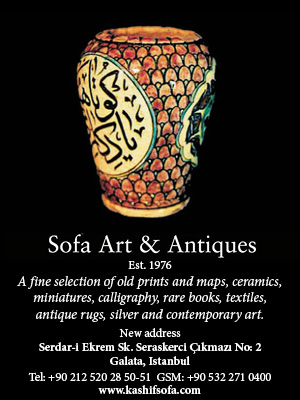Both Sotheby’s and Christie’s hold Islaimic and Indian art sales this week. And Sotheby's is also holding its Orientialist Art sale plus an important single-collection sale of watercolours by David Roberts, RA. Bonhams in Bond Street holds its Islamic and Indian sale on May 23. If the mood is a little subdued this year it is hardly surprising, but there are still some gems and close inspection of artefacts before they get scooped up by museums and reclusive collectots is always instructive.
First up is Orientalist Art at Sotheby's, starting 3pm on Tuesday, April 27, with works by some 35 artists. Top billing goes to Lot 208, a luminously vivid Osman Hamdi (or Hamdy as he signed himself), expected to fetch as much as £1.5 million. The painting, pictured above, shows two girls washing their hands as they prepare to serve coffee, Above them, inscribed on the stone lintel, is a bold Kufic bismillah invoctation. Painted in oil on canvas, and just 60.5 by 36cm in size, Preparing Coffee is signed OHamdy Bey 1889. The Paris-trained artist, and founder of the Archaeological Museum in Istanbul sold his work exclusively to Western clients, hence the Latin script.
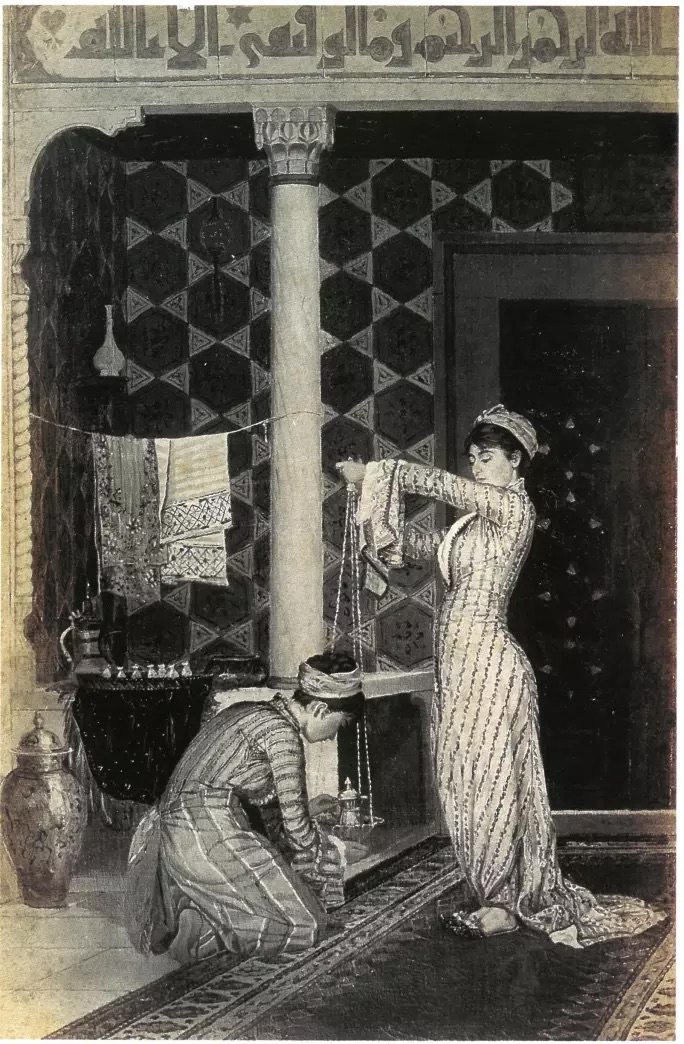
Until the canvas's recent discovery, the work was known only through this contemporary photograph by Sébah & Joaillier. The glass negative is held at the Istanbul German Archaeological Institute (INV no. 8065).
Magnificent tiles and a door inlaid with mother-of pearl form the backcloth, perhaps suggesting the Topkapı. The symbols of Ottoman domesticity are itemised with loving care, from embroidered towels hanging on a line to the bowl and ewer. There is of course nothing of the Oriental excess found in the work of some Western contemporaries. Perhaps a deliberate corrective. Osman Hamdi worked hard to create a new Turkish school of painting. Opposite his new Archaological Museum, he founded the new Imperial Academy of Fine Arts.
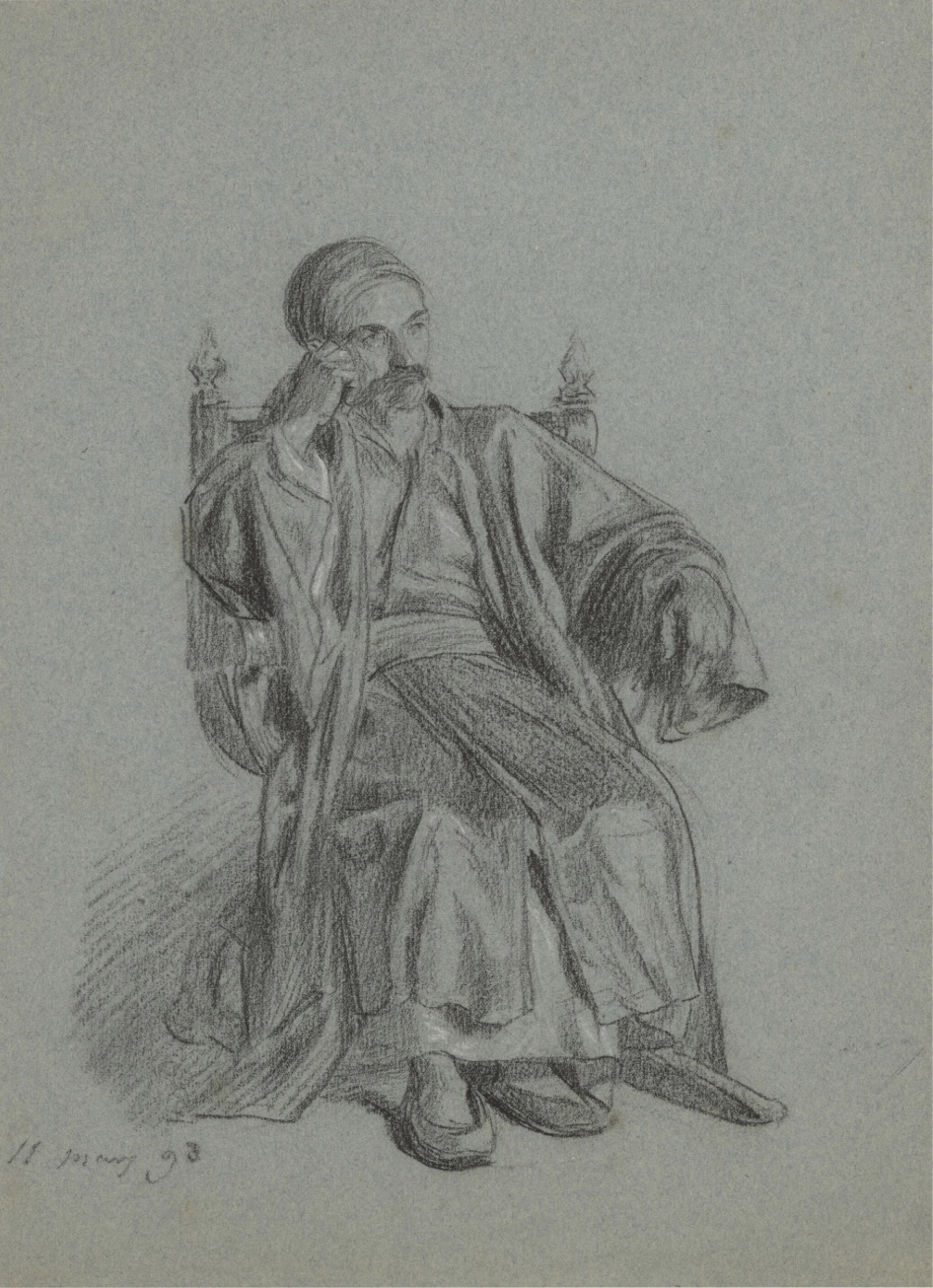
Another work of first-hand observation is Lot 238 (est. £12,000–18,000) is this powerful black-and-white-chalk study on blue paper by Alexandre Bida (1813–95): A Seated Arnaut is dated '11 Mars 93'. Bida had travelled to the Ottoman Empire, and Egypt in paricular, with Gustave Flaubert in the 1840s, inspired to look East by his master Delacroix's example in Algeria. For the rest of his life he would continue reworking scenes drawn in situ, earning a commission in the 1860s to illustrate the Bible, and winning accolades for his exhibits at the Paris Salon. For Maxime Du Camp, as Claude Piening writes in Volume II of Painters of the Ottoman Empire: Artists in the Ömer Koç Collection, Bida was 'an artist in the greatest sense of the word'.
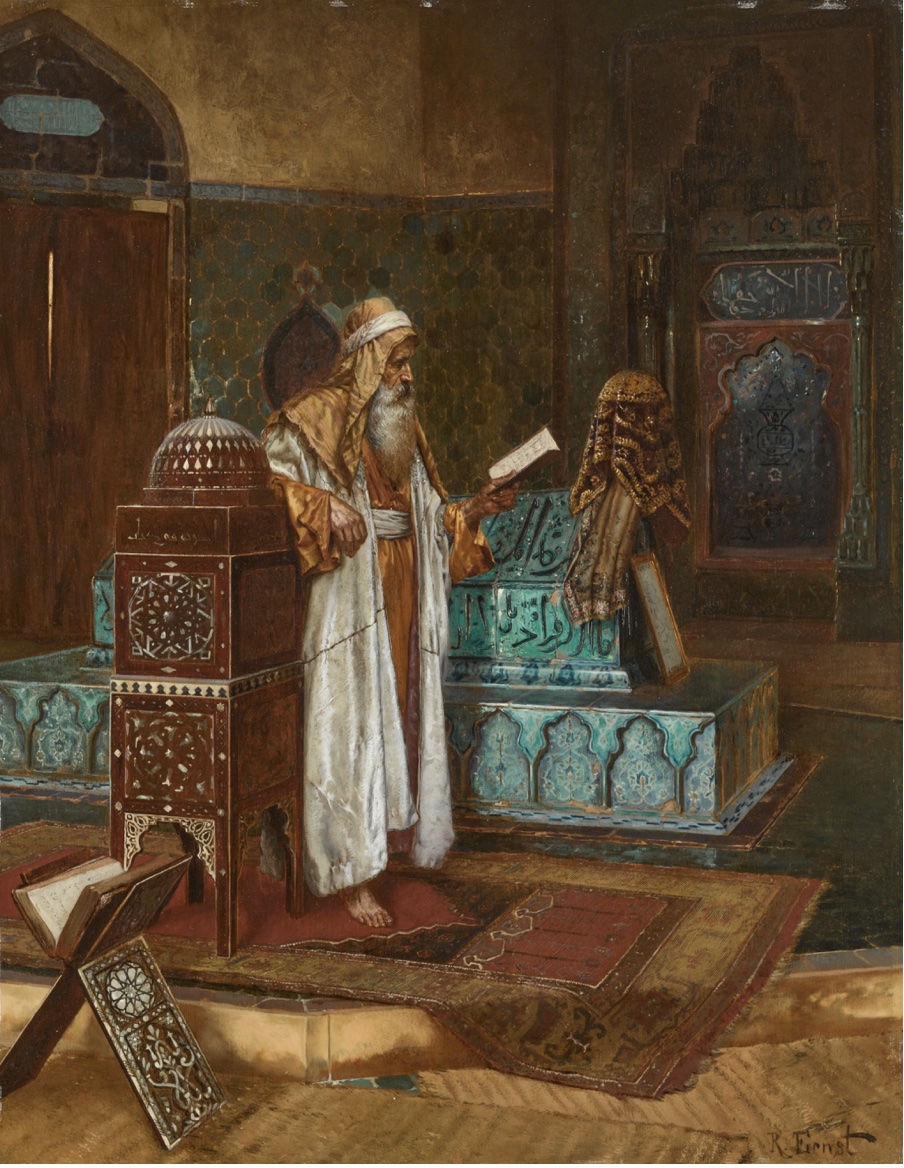
Minute observation is the keynote of Reciting the Koran (Lot 215, 103 by 87cm, £80,000–120,000), by the Austrian artist Rudolf Ernst (1854–1932). As the catalogue notes, Ernst often worked up material from photographs as he complained it was hard to sketch in situ. Here he depicts the interior of the Yeşil Turbe in Bursa, surely seen and recorded in life with its gorgeous turquoise tiles glimmering in the gloom. The oil was shown in the 1911 Paris Salon in 1911 (no. 670, Tombeau du sultan Mehmed).
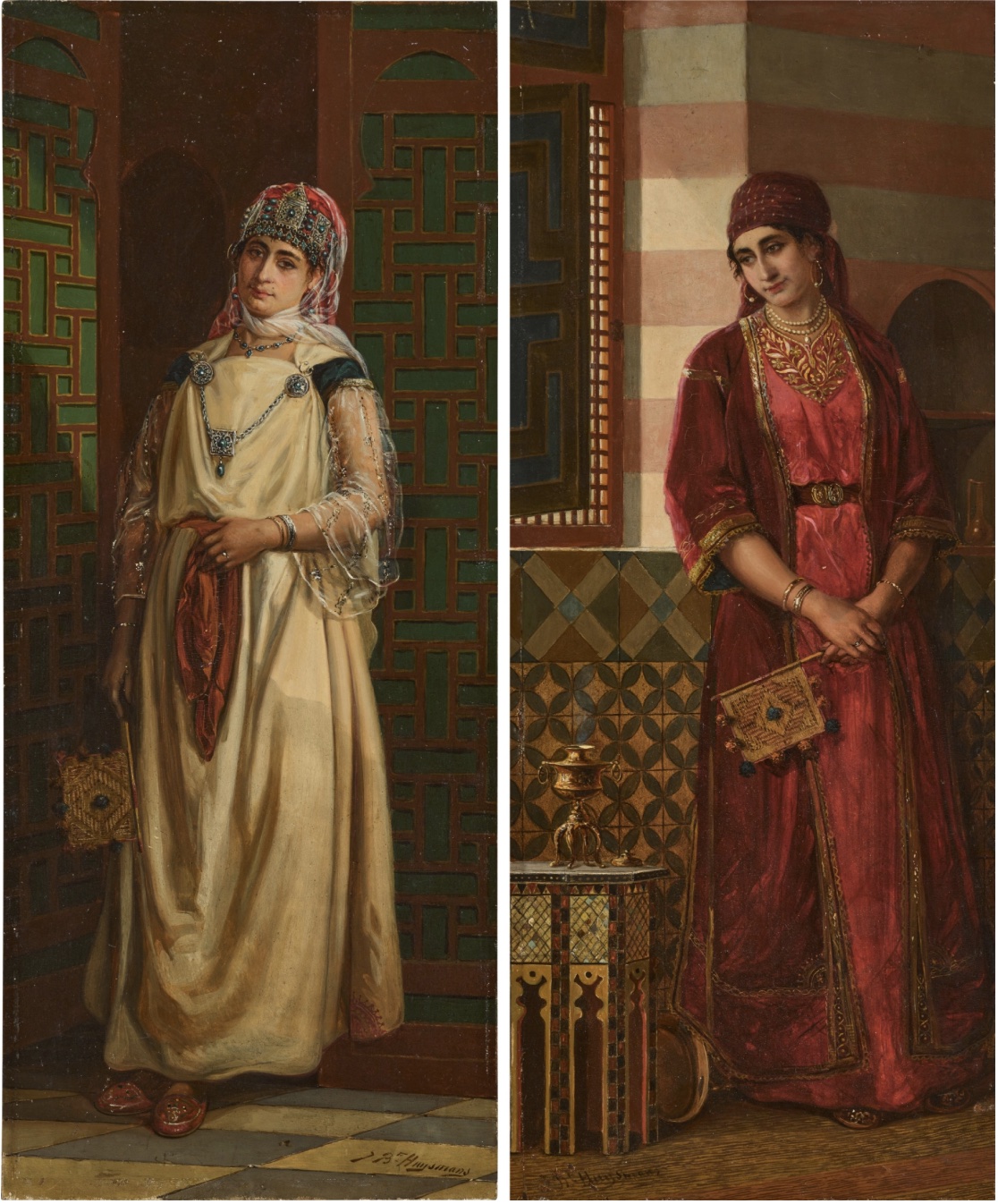
For its restrained elegance,The Favourites; a pair, by the Belgian artist Jan Baptist Huysmans (1826–1906) also caught the eye (Lot 21, 54.4 by 22.7cm, est £20,000–30,000). Huysmans travelled in Ottoman lands and along the African coast to Algeria in the 1850s, publishing illustrated memoirs of his travels. He was also noted for very large religious paintings, some of which were panted for churches in Jerusalem.
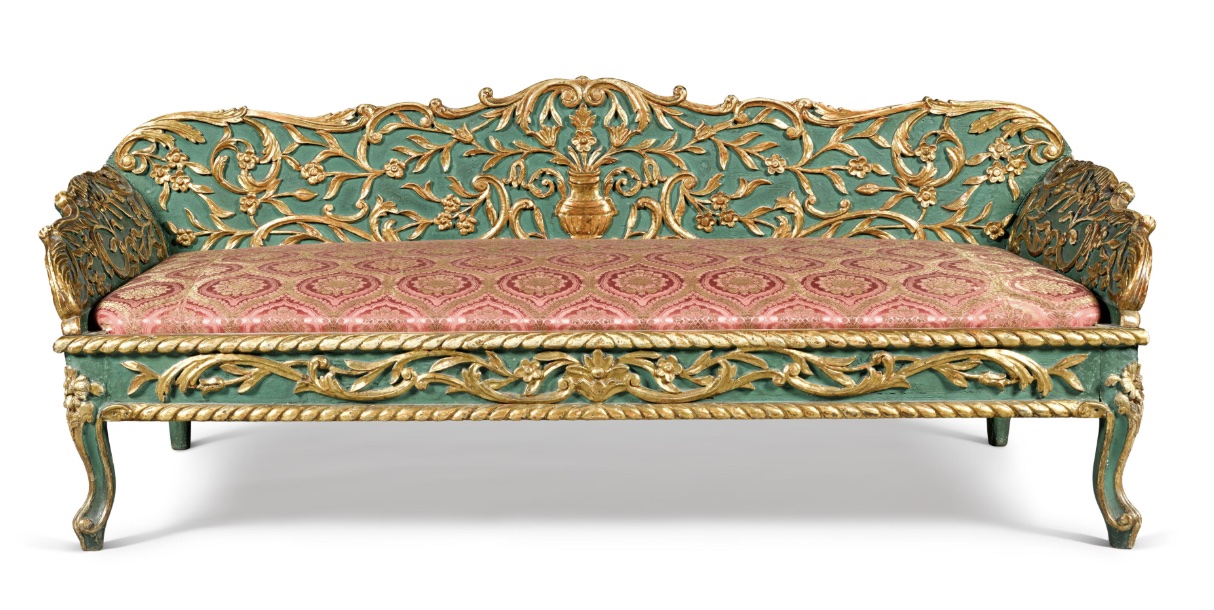
This splendid throne (taht) for an Ottoman or Mamluk potentate, is Lot 671 in Sotheby's Arts of the Islamic World and India sale on April 30. It carries and estimate of £30,000–50,000).

And on May 1, it is Christie's turn. Lot 111 their Art of the Islamic and Indian Worlds, including Rugs and Carpets is A Costume Album attributed to the early-19th-century Ottoman artist Fenerci Mehmed (est £150,000–200,000).
But Christie's have something else up their sleeve, Damascus, Faded Opulence, an exhibition of photographs of Damascus interiors by Tim Beddow. The images originally illustrated a wonderful Thames & Hudson book by Brigid Keenan. Some of them appeared in Cornucopia 21, others will feature in the new issue, No 68. They can now all be purchased as limited edition prints from Tim Beddow's website.













